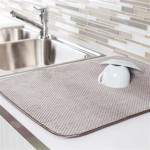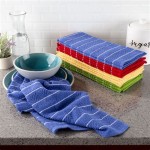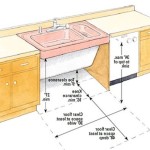Farm Sinks For Kitchen: A Comprehensive Guide
Farm sinks, also known as apron-front sinks, have seen a resurgence in popularity in recent years, evolving from a purely utilitarian fixture in rural kitchens to a sought-after design element in modern homes. Their distinctive exposed front panel and generous basin depth offer a unique blend of functionality and aesthetic appeal. This guide provides a comprehensive overview of farm sinks, covering their construction, materials, styles, installation considerations, and maintenance, to assist homeowners in making informed decisions about incorporating them into their kitchens.
The defining characteristic of a farm sink is its prominent apron front, which extends beyond the edge of the countertop and becomes a focal point of the kitchen design. This exposed front is not merely aesthetic; it also pulls the sink closer to the user, potentially reducing strain on the back and arms during extended use. The large, deep basin of a farm sink readily accommodates bulky pots, pans, and dishes, making it a practical choice for busy kitchens and avid home cooks.
Farm sinks are available in a wide range of materials, each offering distinct properties and visual characteristics. The choice of material impacts the sink's durability, maintenance requirements, and overall aesthetic.
Common Farm Sink Materials
Fireclay: Fireclay sinks are crafted from a specific type of clay fired at extremely high temperatures, resulting in a dense, non-porous material. This process makes fireclay highly resistant to scratches, chips, and stains. The smooth, glossy surface of fireclay sinks is easy to clean and maintain, enhancing their appeal. However, fireclay sinks are typically heavier than other options and may require reinforced cabinetry for support. Color options are often limited to white and off-white shades.
Stainless Steel: Stainless steel farm sinks offer a modern, industrial aesthetic and are known for their durability and resistance to corrosion. Stainless steel is a relatively lightweight material compared to fireclay, simplifying installation. It is also a hygienic choice, as stainless steel inhibits the growth of bacteria. Stainless steel sinks are available in various gauges, with lower gauges indicating thicker, more durable steel. Scratches can be a concern with stainless steel, but regular cleaning can minimize their appearance. The sound of running water can also be louder in stainless steel sinks compared to quieter materials like fireclay.
Cast Iron: Cast iron farm sinks are coated with a thick enamel finish, providing a durable and aesthetically pleasing surface. The enamel protects the cast iron from rust and corrosion, while also offering a wide range of color options. Cast iron sinks are known for their heat retention properties, which can be beneficial for washing dishes. However, cast iron sinks are extremely heavy and require significant cabinet reinforcement. The enamel coating can also be susceptible to chipping or staining if not properly maintained.
Copper: Copper farm sinks offer a unique, rustic aesthetic that develops a distinctive patina over time. Copper is naturally antimicrobial, making it a hygienic choice for the kitchen. The material is also relatively soft, which can help to reduce the risk of breaking delicate glassware. However, copper sinks can be prone to denting and scratching, and the patina can be uneven if not properly cared for. Specialized cleaning products are often required to maintain the appearance of copper sinks.
Composite: Composite farm sinks are typically made from a mixture of granite or quartz particles and a resin binder. These sinks offer a good balance of durability, affordability, and aesthetic appeal. Composite sinks are resistant to scratches, stains, and heat, and are available in a wide range of colors and textures. They are also generally lighter than fireclay or cast iron sinks, simplifying installation. However, composite sinks may not be as durable as fireclay or stainless steel options.
Beyond material, farm sinks are available in different configurations to suit various kitchen layouts and design preferences. These configurations primarily relate to the number of basins and their arrangement.
Farm Sink Styles and Configurations
Single-Basin: Single-basin farm sinks offer the most expansive workspace, providing ample room for washing large pots and pans. This style is ideal for kitchens where functionality is prioritized over multiple compartments. Single-basin sinks are generally easier to clean than multi-basin options due to the absence of dividers.
Double-Basin: Double-basin farm sinks feature two separate compartments, allowing for simultaneous washing and rinsing or soaking. This style is particularly useful for kitchens where multiple tasks are performed simultaneously. Double-basin sinks can be configured with equal-sized basins or with one larger and one smaller basin to accommodate different needs.
Offset Basin: Offset basin farm sinks feature two compartments of different sizes, with the smaller basin typically positioned to one side. This configuration provides a balance between a spacious main basin and a smaller compartment for rinsing or food preparation. Offset basin sinks are a versatile option for kitchens with limited space.
Corner Farm Sinks: Designed for installation in a corner, these sinks maximize space utilization in smaller kitchens. These are typically a single basin setup and require specialized cabinetry.
Installing a farm sink requires careful planning and attention to detail. The weight of the sink, cabinet modifications, and plumbing connections all need to be considered to ensure a successful installation.
Farm Sink Installation Considerations
Cabinetry: Farm sinks require specialized cabinetry to support their weight and accommodate their unique shape. Standard base cabinets typically need to be modified or replaced with apron-front cabinets specifically designed for farm sink installation. The cabinet opening must be precisely sized to fit the sink, and adequate structural support must be provided to prevent sagging or failure. It is generally recommended to consult with a qualified cabinetmaker or contractor to ensure proper installation.
Weight: Farm sinks, particularly those made of fireclay or cast iron, can be extremely heavy. The combined weight of the sink and water can place significant stress on the cabinetry. It is essential to reinforce the cabinet structure to support the weight of the sink and prevent damage. This may involve adding extra bracing, reinforcing the cabinet frame, or using heavy-duty support brackets.
Countertop: The countertop must be precisely cut to accommodate the farm sink's apron front. The countertop material should be compatible with the sink material to prevent staining or damage. The countertop should be properly sealed to prevent water damage and maintain its appearance. The weight of the countertop needs to be factored in when determining the cabinet needs.
Plumbing: Farm sink installations may require modifications to the existing plumbing system. The drainpipe and water supply lines may need to be repositioned to align with the sink's drain and faucet connections. The sink's depth may also require adjustments to the garbage disposal or other under-sink appliances. It is generally recommended to consult with a qualified plumber to ensure proper plumbing connections.
Drain Placement and Accessories: The positioning of the drain should be carefully considered, as some farm sinks have drains in the center and others towards the back. The sink can be accessorized to improve its performance and function. Options include, but are not limited to, bottom grids to prevent scratching the bottom of the sink and colanders/cutting boards to fit over the basin top.
Maintaining a farm sink properly is essential to preserving its appearance and prolonging its lifespan. The specific cleaning and maintenance requirements vary depending on the sink material.
Farm Sink Maintenance and Care
Fireclay: Fireclay sinks are relatively easy to clean and maintain. Regular cleaning with a mild soap and water solution is usually sufficient to remove dirt and stains. Abrasive cleaners should be avoided, as they can scratch the surface. Stubborn stains can be removed with a paste of baking soda and water. It is important to dry the sink thoroughly after each use to prevent water spots.
Stainless Steel: Stainless steel sinks should be cleaned regularly with a mild soap and water solution. Special stainless steel cleaners can be used to remove stubborn stains and fingerprints. Abrasive cleaners and steel wool should be avoided, as they can scratch the surface. Drying the sink thoroughly after each use is essential to prevent water spots and rust. Mineral oil can be applied periodically to maintain the shine and prevent discoloration of stainless steel.
Cast Iron: Cast iron sinks should be cleaned regularly with a mild soap and water solution. Abrasive cleaners should be avoided, as they can damage the enamel coating. Stains can be removed with a paste of baking soda and water. It is important to dry the sink thoroughly after each use to prevent water spots and rust. Chipped or cracked enamel should be repaired promptly to prevent further damage.
Copper: Copper sinks require specialized cleaning products to maintain their appearance and prevent uneven patina development. Harsh chemicals and abrasive cleaners should be avoided. Regular cleaning with a copper cleaner can help to maintain the desired patina. Waxing or oiling the sink periodically can help to protect the surface and prevent water spots.
Composite: Composite sinks are generally easy to clean and maintain. A mild soap and water solution is usually sufficient to remove dirt and stains. Abrasive cleaners and harsh chemicals should be avoided. Stubborn stains can be removed with a composite sink cleaner. Drying the sink thoroughly after each use can help to prevent water spots and discoloration.
Beyond material-specific maintenance, it is essential to avoid dropping heavy or sharp objects into the sink, as this can cause dents, scratches, or chips. Using a sink grid or mat can help to protect the sink bottom from scratches and impacts.
Selecting a farm sink involves evaluating a variety of factors, from material durability to aesthetic compatibility with the kitchen design. Informed decision-making is crucial to ensuring long-term satisfaction with this prominent kitchen feature. Budget, functionality, and personal taste also influence the final selection.
How To Choose The Right Farmhouse Sink For Your Kitchen Signature Hardware
How To Choose The Right Farmhouse Sink For Your Kitchen Signature Hardware
How To Choose The Right Farmhouse Sink For Your Kitchen Signature Hardware
How To Choose The Right Farmhouse Sink For Your Kitchen Signature Hardware

2024 Complete Guide How To Install A Farmhouse Sink Getprohome

Farmhouse Sinks Apron Front Kitchen Ruvati Usa

The Ultimate Farmhouse Sink Installation Guide Boutique

Farmhouse Sinks Kitchen Inspiration The Inspired Room

33 Workstation Single Bowl Granite Farm Sink Black Accessories

Complete Guide To Farmhouse Sink Installation
Related Posts








